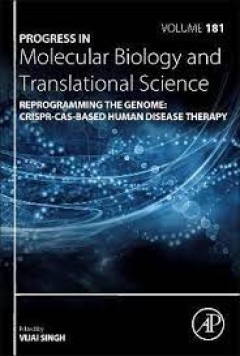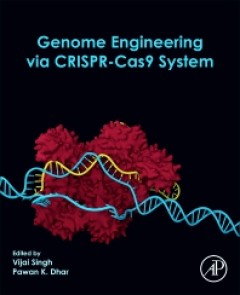Filter by

Advancing Genetic Engineering Protocols for Protein Expression in Pichia Past…
- Edition
- -
- ISBN/ISSN
- Intern 016-2024
- Collation
- vii, 47 p. : ill. ; 30 cm.
- Series Title
- -
- Call Number
- BM-003
- Edition
- -
- ISBN/ISSN
- Intern 016-2024
- Collation
- vii, 47 p. : ill. ; 30 cm.
- Series Title
- -
- Call Number
- BM-003

Pooled Whole-genome CRISPR/Cas12a Loss-of-Function Screens Reveal A Novel Pre…
Though rare, atypical teratoid/rhabdoid tumors (ATRT) remain a clinically challenging pediatric tumor and lack defined treatments. “One-size-fits-all” multimodal regimens have largely been of modest clinical benefits thereby urging the development of precision medicine for ATRT. However, the single- mutation nature of pediatric tumors like ATRT has misrepresented the potential of non-mut…
- Edition
- -
- ISBN/ISSN
- -
- Collation
- -
- Series Title
- -
- Call Number
- BM 24-027

Investigation of Gene Dependencies in Paediatric Tumour Models Using CRISPR-C…
Paediatric cancer accounts for the majority of cancer-related mortality in children. Although current treatment increased the overall survival rates, young individuals often encounter life-long side effects from toxic therapies. Therefore, there is an urgent need for targeted therapies aimed at tumour-specific vulnerabilities for greater specificity and reduced toxicity, in which precision m…
- Edition
- -
- ISBN/ISSN
- -
- Collation
- -
- Series Title
- -
- Call Number
- BT 24-005

Stards Knockdown Reveals DLC3 Involvement in Vascular Generation and Immune C…
The Deleted in Liver Cancer family houses the RhoGAP proteins DLC1 and DLC2, which have already been known for their tumor suppressive capabilities, and DLC3, whose studies regarding this gene are minimal. This study seeks to elucidate the function of DLC3 protein towards tumor development by looking at the changes in angiogenesis and cell migration rate following DLC3 downregulation, using zeb…
- Edition
- -
- ISBN/ISSN
- -
- Collation
- -
- Series Title
- -
- Call Number
- EP BM-018

Scalable CD45 and PD-1 Gene Knockout Protocols in T cell using CRISPR/Cas9 Sy…
Chimeric Antigen Receptor (CAR) T cell therapy has revolutionised immunotherapy by boosting T celldriven tumour cell destruction through specific antigen recognition. Despite its success in haematological cancers, significant hurdles in using CAR T cells for solid tumours are the suppression of CAR T cell proliferation and effector functions. This research addresses the pressing challenge in ca…
- Edition
- -
- ISBN/ISSN
- -
- Collation
- -
- Series Title
- -
- Call Number
- EP BM-008

Understanding the Regulation of Proteasome Homeostasis upon Stress
Dysregulation of the ubiquitin-proteasome system (UPS) leads to the accumulation of aggregationprone proteins which has been linked to neurodegeneration and cancer. The 26S proteasome is acentral component of the UPS. It assembles by the successive recruitment of the 33 different proteasome subunits which is assisted by proteasome assembly chaperones: five for the CP and five for the RP. RPAC…
- Edition
- -
- ISBN/ISSN
- -
- Collation
- -
- Series Title
- -
- Call Number
- BM 23-012

Validating hit genes from CRISPR screening on response toward combinations of…
Acute myeloid leukemia (AML) is a heterogenous blood cancer disease that develops from the stem cell precursors which the myeloid lineage happened due to genetic lesion that leads to overproduction and failure to differentiate these myeloid blast cells. A mutation in the FMS-like tyrosine kinase 3 (FLT3) gene, is the most frequent genetic lesion in AML patients, this mutation is linked with a p…
- Edition
- -
- ISBN/ISSN
- -
- Collation
- -
- Series Title
- -
- Call Number
- BM 23-031

In silico Design of Plasmid to Generate Stable Cell Line Expressing Monoclona…
Therapeutic mAbs are the class of innovative therapeutic molecules with the highest growth (mAbs). They have great potential for the treatment of many diseases, including cancer and chronic inflammatory conditions. In 1975 in order to develop monoclonal antibodies 2 scientists, Kohler and Milstein developed a technique in the fusion of myeloma cells with immunized mouse immune cells resulti…
- Edition
- -
- ISBN/ISSN
- -
- Collation
- -
- Series Title
- -
- Call Number
- BM 22-028

Systematic Review on Advances of Therapeutic Gene Therapy Against Prostate Ca…
Prostate cancer is commonly found among men above 65 years old, making it one of the most commonly found malignancies found worldwide. Prostate cancer lacks early signs or symptoms, making it hard to diagnose in the early stages. The late-stage diagnosis tendencies accompanied by the inherent resistance mutation capability of cancer make it a hard disease to cure. Recently advancements in the m…
- Edition
- -
- ISBN/ISSN
- -
- Collation
- -
- Series Title
- -
- Call Number
- BM 22-046

Progress in molecular biology and translational science : reprogramming the g…
- Edition
- Volume 181
- ISBN/ISSN
- 9780323853231
- Collation
- xvi, 376 p. : ill. : ind. ; 24 cm.
- Series Title
- -
- Call Number
- 571.6 Pro
- Edition
- Volume 181
- ISBN/ISSN
- 9780323853231
- Collation
- xvi, 376 p. : ill. : ind. ; 24 cm.
- Series Title
- -
- Call Number
- 571.6 Pro

Genome engineering via crispr-cas9 system
- Edition
- -
- ISBN/ISSN
- 9780128181409
- Collation
- xxi, 361 p. : ill. : ind. ; 28 cm.
- Series Title
- -
- Call Number
- 612.028 Gen
- Edition
- -
- ISBN/ISSN
- 9780128181409
- Collation
- xxi, 361 p. : ill. : ind. ; 28 cm.
- Series Title
- -
- Call Number
- 612.028 Gen
 Computer Science, Information & General Works
Computer Science, Information & General Works  Philosophy & Psychology
Philosophy & Psychology  Religion
Religion  Social Sciences
Social Sciences  Language
Language  Pure Science
Pure Science  Applied Sciences
Applied Sciences  Art & Recreation
Art & Recreation  Literature
Literature  History & Geography
History & Geography